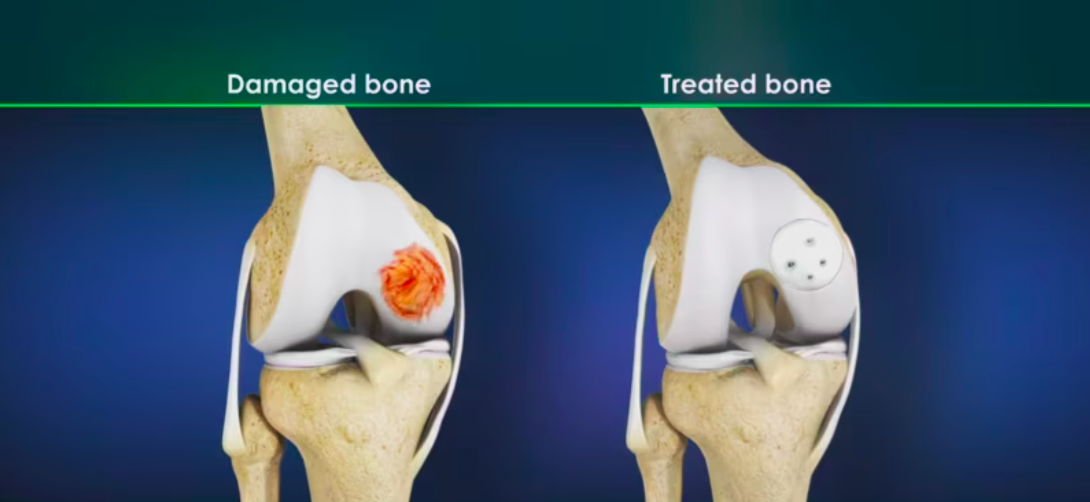Knee Osteoarthritis Treatment in Jaipur - KneeCares
Articular Cartilage Damage Treatment
Osteoarticular cartilage, a remarkable tissue within our joints, constantly faces stress and is susceptible to traumatic injuries or degenerative conditions, particularly in weight-bearing joints like the knee. When individuals, whether teenagers, young adults, or mddle-aged adults, develop localized full-thickness cartilage or cartilage and bone defects, this essentially mirrors a localized form of osteoarthritis.

For patients with substantial defects, especially those involving bone, a highly effective treatment for cartilage deficiency is the utilization of fresh osteoarticular allografts. These allografts are sourced from young donors with knee sizes matching the affected patient. Our findings show that fresh osteoarticular allografts have led to significant functional and clinical enhancements, with outcomes similar to historical reports from other centers for patients treated with such implants, after an average follow-up of three years.
It's crucial to perform a thorough assessment to determine whether a patient is a suitable candidate for this surgery. While it may not constitute an arthritis cure, many patients experience significant improvements in their quality of life for a decade or more post-surgery. Essentially, this procedure offers a "biologic resurfacing" and it's essential to understand that not all patients can resume full-impact activities following the surgery.
POST OPERATIVE PROTOCOL FOR OSTEOARTICULAR ALLOGRAFTS.
Patients undergoing a fresh osteoarticular allograft procedure follow a carefully structured recovery plan. For the initial 8 weeks after surgery, they are required to remain non-weightbearing, with the additional use of a continuous passive motion (CPM) device for 8-10 hours daily. In cases where a single donor plug is used, patients can start using a stationary bike once the surgical incision has sufficiently healed, typically around two weeks post-surgery. Immediate physical therapy is commenced to address quadriceps muscle activation, knee mobility, and to manage swelling.
Around the 8-week mark, we perform radiographs to confirm the donor graft's adequate healing. Once this healing is verified, patients transition into a partial weight-bearing program, gradually increasing by ¼ of their body weight each week until they are fully weightbearing. We also introduce resistance on stationary bikes and leg presses at ¼ of their body weight.
At the 3-month post-op mark, patients can begin to phase out their use of crutches and start proprioceptive and agility exercises. Engagement in impact activities, however, requires surgeon approval and typically begins between 6-9 months post-surgery.
If you need to get in Contact with us, please don’t hesitate to do so. We are always happy to help you out in any way we can.
Knee Osteoarthritis Treatment, osteoarticular allografts in Jaipur, Articular Cartilage Damage Treatment, Osteoarticular cartilage damage treatment , Osteoarticular allografts surgery,Top Knee surgeon near me,Best Arthroscopy surgeon,Knee pain recovery, Best Knee Cares Treatment, Knee specialist in jaipur



Comments
Post a Comment